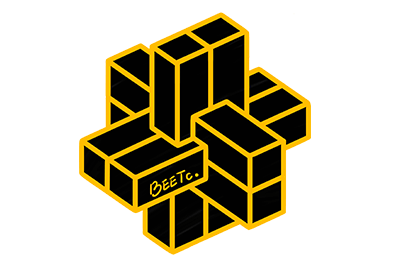How do you see the ecosystem changing in the next 2 years with the deprecation of the 3p
cookie?
For the longest time, advertising cookies and advertising IDs (device IDs) have been the foundation for rich user profiles and to enable relevant advertising targeting, personalization and attribution. Third party cookies are placed by advertisers, publishers to store information on user’s browsers to gather information about their interests and websites they have visited.
These cookie information can go across websites and be shared across multiple technology players within the advertising ecosystem.
Google recently announced the removal of third-party cookies in 2 years’ time, similar steps were taken by Firefox browser.
Most recently, Apple announced new measures as a part of its privacy protection in iOS 14 by making the IDFA explicitly for all applications.
Apps will now need to seek user’s permission before the app can use the identifier for tracking purposes.
Impact and Alternatives:
- Third-party DMP data based on a cookie or digital ID will be obsolete and likely will have no relevance.
- The ability to attribute conversions will get tougher, the fingerprinting mechanism might come handy.
- Omnichannel marketing across multiple DSPs becomes a challenge.
- Reliance on (FAGA) or walled gardens would increase, FB, Apple, Google, Amazon
- First party data will be the new normal though it would require CDPs to play a major role, though this new framework would lead to rising cost of integration and real time targeting.
- Evolution of new publisher consortiums where multiple publishers would share their first party cookies to build common audiences.
- CDPs which are built on first party data foundation would solve multiple challenges such as customer journey, offline to online, attribution based on first party datasets.
- Contextual Targeting – Reliance on publisher content and keywords would play a major role rather than individual customer third party identity.
What makes your company different from others in the MarTech landscape?
Meiro is a native, purpose-built Customer Data Platform, which allows you to identify customers and see their detailed customer journey across various touch-points.
With a background in data engineering, we offer a full stack CDP built on a robust data integration platform focused on decoupling the system access to data teams and business users. Built for Enterprise and specially regulated industries – We offer private installations in either cloud or on-premise as well as a managed solution in every major cloud, everywhere in the world. Meiro integrates online & offline modern and legacy systems from various data sources and combines them together.
As an approach we do not ask brands to remove existing MarTech stacks, our goal is to let these systems communicate with each other and track customer journeys across the ecosystem. Due to our private installations, we have 1st party data collection which maintains cookie life as long as 2 years. Meiro integrates online & offline modern and legacy systems, and also creates 1st party cookie repositories to prepare organizations for the Ad industry changes.
What are the top 3 concerns one should watch out for, when implementing a MarTech
stack?
Brands are holding vast amounts of rich data in their legacy systems (data lake, warehouses, CRM and others), the challenge is to bring all these rich datasets into one system and combine with the digital behaviors of the customers.
As the customer experience becomes increasingly pivotal for brands and many potential blanks in the customer journey, customers expect brands to be able to understand and speak to them as they jump from device to device, without skipping a beat. Brands now face the problem of piecing together a current, coherent, and most importantly complete customer identity from the sea of data points created during every brand interaction across web, app, email, and beyond.
When implementing a MarTech System, one should look out for:
- White Box Approach – Plug and play is not the optimal solution, every brand has their own different datasets and business processes in place, solution that offers a canvas for the marketers to draw their own taxonomy, addresses key business goals and offers ability to connect any data anywhere.
- Integration (ETL) – A robust ETL tool is a must, every digital transformation journey requires a robust data audit and data preparation process, always look out for a solution that offers integration to any system and also allows you to extract, transform and load data within one tool.
- Activation – Analytics and tracking is great, but the challenge is to activate and measure. All insights within your MarTech tools should have a capability to activate audiences to any system and simultaneously allow you to measure ROI within the same system. Orchestration around customer and campaign data exists with the same MarTech solution.
Do you see the need to visualize your data through interactive tools like dashboards? What BI tools do you use currently, if any? Are these effective?
BI or visualization tools are at the end of the data or digital transformation journey, the real challenge is the data consolidation or unification first, as a marketer myself I would never ask brands or fellow marketers to go for a specific BI tool (Data Studio, Power BI or Tableau). Your choice.
These tools are very effective, though the hard work is to bring those insights or journeys into these BI tools. The datasets are spread across 1st party cookies, loyalty, campaigns, user analytics, surveys and many more, before you design a dashboard, one needs to make sure these datasets are combined first and then represented on the BI or visualization tools.
One last comment is to focus on getting a solution to address data collection, consolidation problem first, marketer would be able to build correct dashboards on any tools once their data foundation is correct.
What would you tell someone who wants to get into your field or into a role like yours?
To become a great marketer, one should understand what a customer feels and what is his/her thought process or journey that eventually leads to the customer making a purchase or retention.
As an example, once I booked a flight from SG to BKK for $200 via Skyscanner with Scoot, after 30 minutes I was exposed to an ad by Scoot saying fly now with us at $150. I really didn’t like the experience as the airline was not combining their customer data with 3rd party channels such as Skyscanner, they didn’t see me as the same customer. Especially in this digital world, customer experience is the key, CX is not about giving the right offer but also excluding audiences who are not relevant to any offers as they just made a purchase recently.
Ask your organisation that we need identity resolution at scale, build profiles that scans your customers at every interaction (offline and online), build granular segments and insights before activation.
We as marketers contribute to brand building, CX, though on the other hand we need to address media wastage and make sure we bulletproof both our data and marketing strategy for the future.
Finally, one line of wisdom that I keep sharing with my colleagues and counterparts. We are at the center of the organization, we need to work with everyone. “Growth is never by mere chance; it is the result of forces working together.”
What are you most looking forward to doing once we get on the other side of this pandemic?
The pandemic has taught us how to evolve with the changing or uncertain times, most of us are not with our loved ones and feel that gap in our life that might not have existed. At least for some of us in our generation.
Though we are still blessed that we have the right technology and communication channels to speak to our colleagues or family members. Hopefully we get to the other side soon and I look forward to bringing these changes in my life.
- Empathy – This is something I look forward to bring with everyone I meet, be it professional or acquaintances, this pandemic has taught that wherever or whoever we are, we all need to be empathetic.
- Travel – Obviously travel, though now it would be different, I might not have itinerary and instead let it be open and see what world or the place offers.
- Whiteboard – I miss taking a pen and drawing problem statements, architecture and solutions in a room, these were the most awesome times at my workplace.













